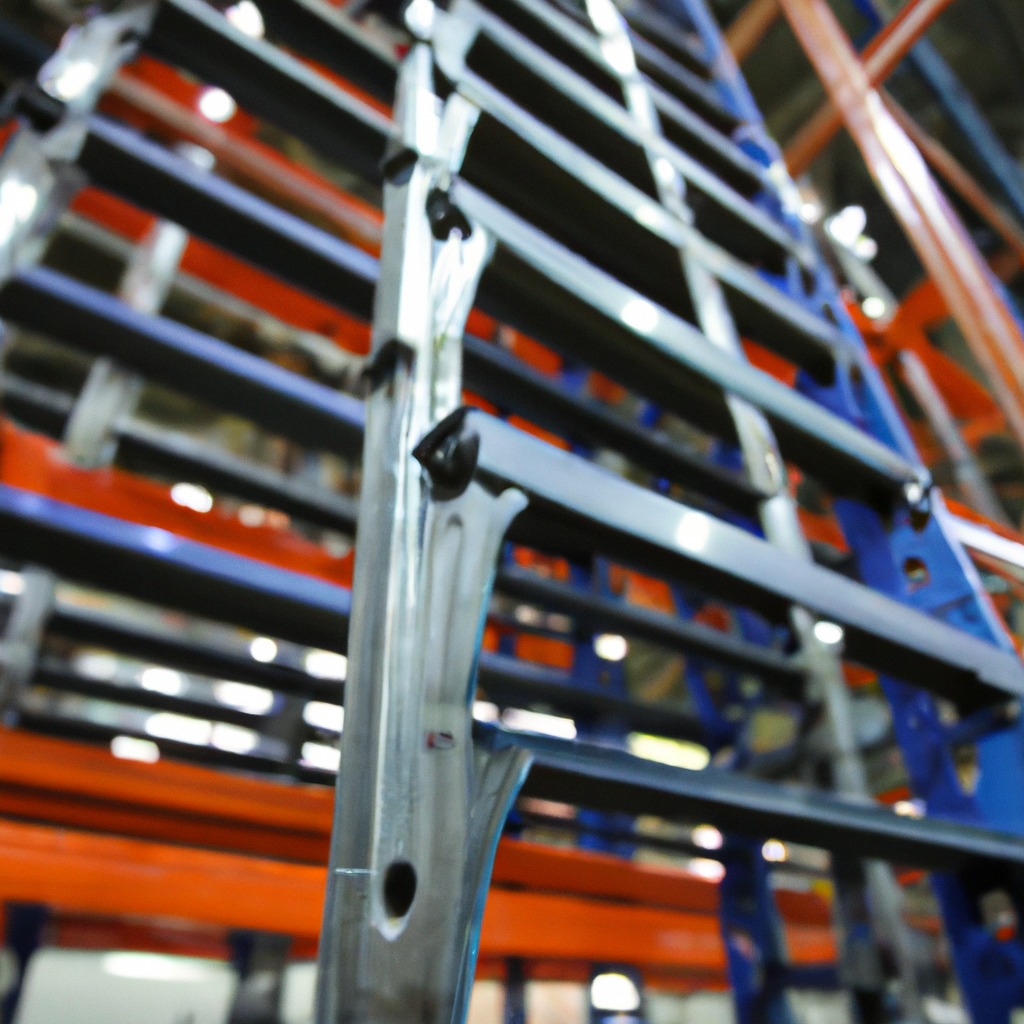When it comes to warehouse management, having the appropriate racking systems is paramount. With various options available in the market, making an informed decision is vital to enhance productivity, improve accessibility, and maintain safety standards. This article aims to equip you with valuable insights and practical tips to assist you in selecting the right racking systems for your warehouse.

Understanding Racking Systems
Before delving into the tips for choosing the right racking systems, it is crucial to understand the different types available. Racking systems can include selective pallet racks, drive-in racks, push-back racks, cantilever racks, and more. Each type offers unique features and benefits, catering to specific storage requirements.
Types of Racking Systems
In this section, we will explore the various types of racking systems commonly used in warehouses. By understanding their characteristics and applications, you can determine which one suits your operational needs the best.
Importance of Choosing the Right Racking System
Selecting the appropriate racking system is essential as it directly impacts the efficiency of your warehouse operations. By choosing the right racking system, you can optimize storage capacity, ensure easy access to inventory, and minimize the risk of damage or accidents.
Assessing Warehouse Needs
To make an informed decision, it is crucial to assess your warehouse’s specific needs and requirements. This section provides insights into evaluating your warehouse layout, space availability, and analyzing storage requirements.
Warehouse Layout and Space Availability
The first step in choosing the right racking system is understanding your warehouse layout and available space. Consider factors such as ceiling height, floor space, and any architectural constraints that might affect the installation and utilization of racking systems.
Storage Requirements and Inventory Analysis
Conducting a thorough analysis of your storage requirements is crucial. Assess your inventory, including its dimensions, weight, and storage characteristics. Understanding the variety of items you handle and their specific storage needs will help determine the most suitable racking system.
Load Capacity and Durability
Load capacity and durability are critical factors to consider while selecting racking systems. Ensure the chosen racking system can withstand the weight and dimensions of your inventory. Taking into account factors like pallet sizes, load capacities, and rack strength will help prevent structural failures and accidents.
Accessibility and Flexibility
Efficient accessibility to stored goods is vital for seamless warehouse operations. Consider the ease of access and retrieval when choosing a racking system. Additionally, assess the system’s flexibility to accommodate changes in inventory size, weight, or storage needs over time.
Considerations for Specialized Goods
Certain goods require specialized storage conditions or handling considerations. This section highlights two essential aspects to consider when dealing with temperature-sensitive goods or hazardous materials.
Temperature and Climate Control
If your warehouse deals with perishable or temperature-sensitive goods, opt for racking systems that offer temperature and climate control features. These systems ensure the integrity and quality of goods, especially in industries such as pharmaceuticals, food, or chemicals.
Hazardous Materials
When storing hazardous materials, it is crucial to prioritize safety and compliance. Choose racking systems designed explicitly for hazardous goods storage, equipped with safety features like spill containment systems, ventilation, and appropriate labeling.
Safety and Compliance Standards
Maintaining a safe working environment should be a top priority. Ensure that the racking systems you choose comply with safety standards, such as load capacity limits, fire safety regulations, and employee accessibility. Regular inspections and maintenance should be part of your safety protocols.
Cost-Effectiveness and Return on Investment
Consider the long-term cost-effectiveness and return on investment (ROI) when selecting racking systems. Evaluate the upfront costs, maintenance requirements, and potential savings in terms of space utilization, productivity, and reduced labor costs. Striking a balance between quality and cost is crucial.
Future Expansion and Scalability
As your business grows, your warehouse needs may change. Plan for future expansion and scalability when selecting racking systems. Ensure that the chosen system can accommodate future growth and adapt to evolving storage requirements.
Supplier Reputation and Support
Choosing a reputable and reliable supplier is essential for obtaining quality racking systems. Look for suppliers with a proven track record, positive customer reviews, and excellent after-sales support. Supplier expertise and assistance can greatly contribute to the success of your warehouse operations.
Integration with Warehouse Management Systems
In today’s digital age, integrating racking systems with warehouse management systems (WMS) is crucial for efficient inventory management. Consider racking systems that seamlessly integrate with WMS software, providing real-time data, inventory tracking, and optimization capabilities.
Case Studies and Success Stories
Learning from real-world examples can provide valuable insights into the benefits of choosing the right racking systems. Explore case studies and success stories of businesses similar to yours that have implemented effective racking solutions. This can help validate your decision-making process and provide practical ideas.
Seeking Professional Guidance
If you find it challenging to navigate the complexities of choosing racking systems, consider seeking professional guidance. Warehouse consultants or material handling experts can offer tailored advice based on your specific needs and provide valuable recommendations.
Decision-Making Process and Checklist
To streamline your decision-making process, create a checklist that incorporates all the factors discussed in this article. Prioritize the criteria based on your specific warehouse requirements, and use the checklist as a reference when evaluating different racking systems.
Conclusion
Choosing the right racking systems for your warehouse is a critical decision that can significantly impact your operations. By understanding your warehouse needs, considering factors such as load capacity, accessibility, and future scalability, and seeking professional guidance when necessary, you can make an informed choice that optimizes space utilization, enhances productivity, and ensures the safety of your workforce.





